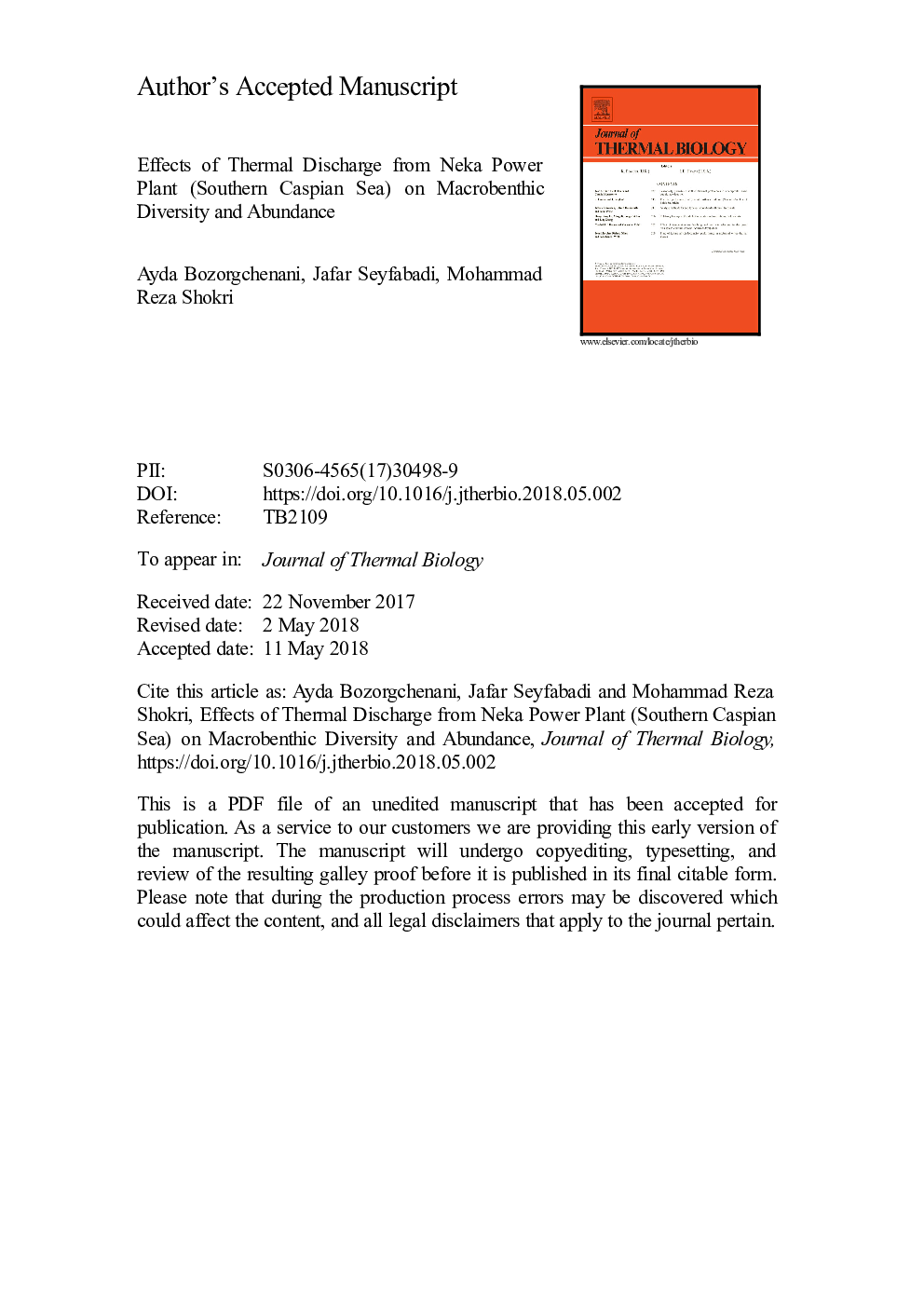| Article ID | Journal | Published Year | Pages | File Type |
|---|---|---|---|---|
| 8649962 | Journal of Thermal Biology | 2018 | 35 Pages |
Abstract
Effects of thermal discharge from Neka power plant on macrobenthic diversity and abundance was studied in the southern coast of the Caspian Sea. Samples were collected with Van Veen grab of 0.0250â¯m2 surface area from 7 stations in winter and summer. A total of 42 species were identified that belonged to 22 genera, 18 families, 13 orders, six classes and three phyla. Bivalve with a total abundance of 90% in winter and 86% in summer constituted the most abundant group throughout samplings, the highest abundance of which belonged to the family Cardiidae. Gastropods followed bivalve in total abundance (8%) in summer and polychaetes (7%) in winter. Statistical analysis indicated significantly higher macrobenthos density at the thermal discharge stations that also took separate positions in the cluster analysis. Temperature was an important factor on the amount of organic matter. Chlorophyll and phaeopigment at the thermal discharge stations were lower than the other stations because of the increased turbulence. The CCA test indicated that temperature was the most influential among all the studied physicochemical factors. The Spearman rank correlation coefficient also showed that the majority of macrobenthic groups had a positive correlation with the organic matter (râ¯= 0.34, pâ¯<â¯0.05). Macrobenthic species were grouped according to their commonalities relative to these three classes using a Bray-Curtis similarity index and similarity profile (SIMPROF) permutation tests analysis (PRIMER 6). Based on the SIMPER analysis, the cockle Hypanis minima and the polychaete Hypaniola kowalewskii with high abundances played the most important role in making differences among the stations, but won't be taken as the “thermal indicating species”. The PERMANOVA test showed that the combination of season and stations had a significant effect. The density of macrobenthos was higher in the thermal discharge stations, but diversity in these stations reduced in comparison with the other stations.
Related Topics
Life Sciences
Agricultural and Biological Sciences
Agricultural and Biological Sciences (General)
Authors
Ayda Bozorgchenani, Jafar Seyfabadi, Mohammad Reza Shokri,
